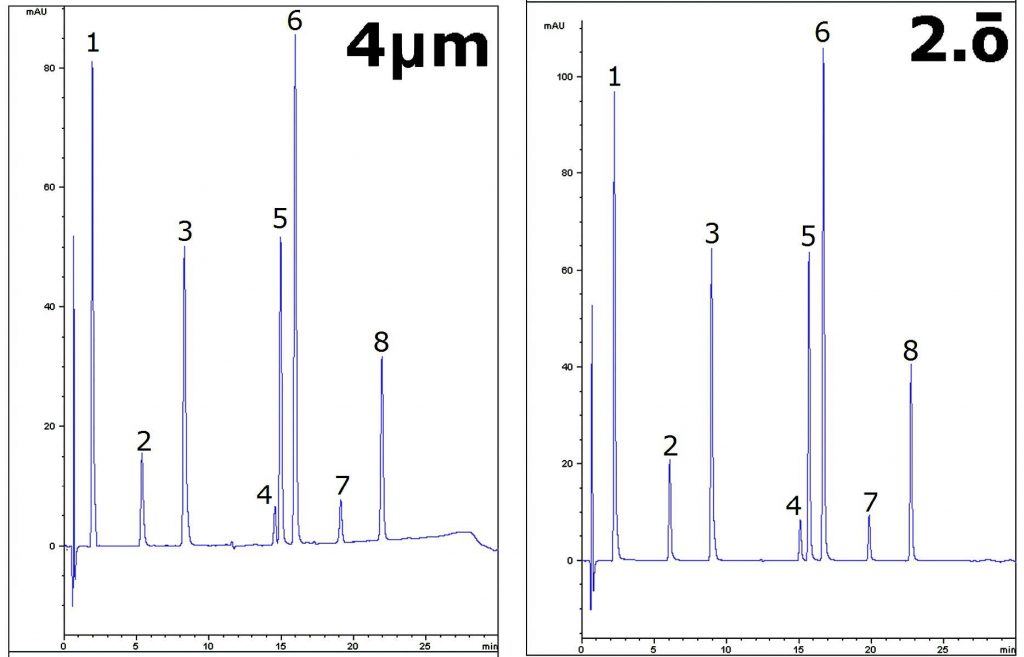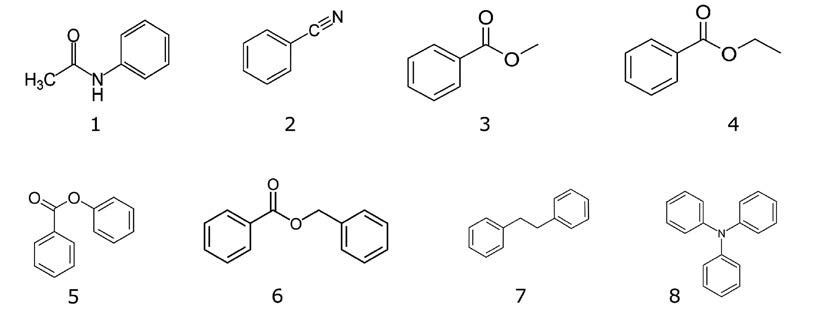Separation of Hydrophobic Compounds with HPLC & UHPLC
This AppNote shows separation of analytes within a range of hydrophobicity. A simple gradient is used to elute all the compounds and baseline separation is obtained for the critical pair (peaks 4 and 5) and the least hydrophobic compound is adequately retained.
A comparison is shown in the figure below with a 4μm Cogent Bidentate C18 Column and a similar 2.o (2.2µm) Column. The retention profiles are quite comparable, meaning Method Transfer from one Column to the other will be easy to achieve.
Peaks:
1. Acetanilide, 2. Benzonitrile, 3. Methyl Benzoate, 4. Ethyl Benzoate,
5. Phenyl Benzoate, 6. Benzyl Benzoate, 7. Bibenzyl 8. Triphenylamine
Method Conditions
Columns: Cogent Bidentate C18 2.o™, 2.2μm, 120Å; Cogent Bidentate C18™, 4um, 100Å
Catalog Nos.: 40218-05P-2; 40018-05P-2
Dimensions: 2.1 x 50mm for both Columns
Mobile Phase:
—A: DI Water / 0.1% Formic Acid (v/v)
—B: Acetonitrile / 0.1% Formic Acid (v/v)
Gradient:
| Time (minutes) | %B |
| 0 | 20 |
| 1 | 20 |
| 25 | 80 |
| 26 | 80 |
| 27 | 20 |
Injection vol.: 1 µL
Flow rate: 0.3mL / minute
Detection: UV @ 254nm
Sample Preparation: Mixture of solutes in 80:20:0.1 Acetonitrile / DI Water / Formic Acid Diluent. Peak identities were confirmed with individual standards.
t0: 0.7 minutes
Attachment
No 274 Transfer HPLC Method to UHPLC with Hydrophobic Compounds pdf 1 Mb Download File




